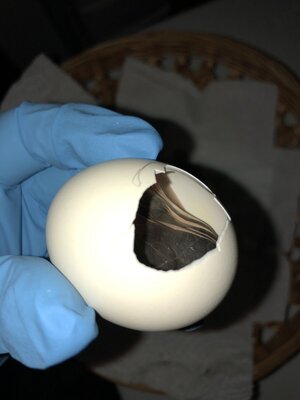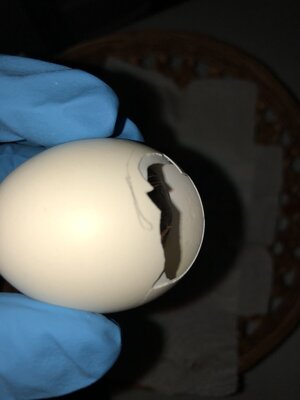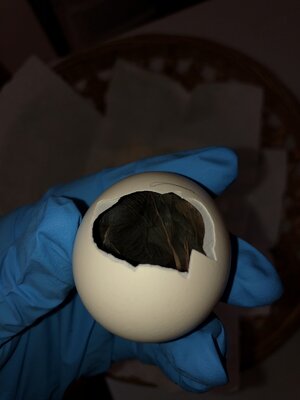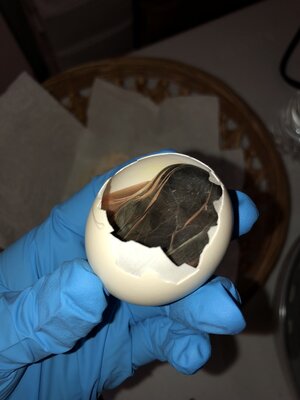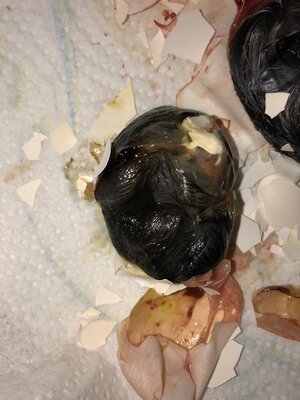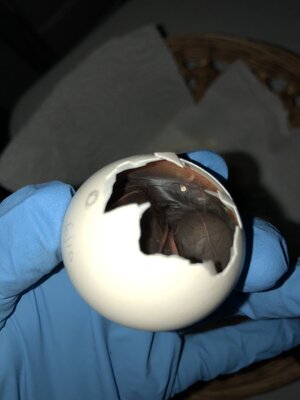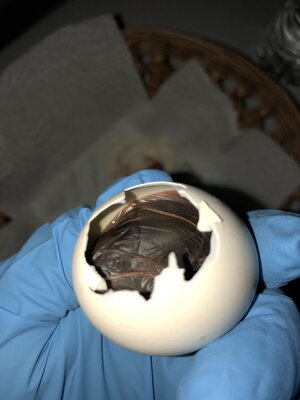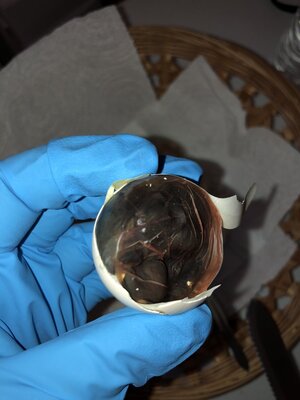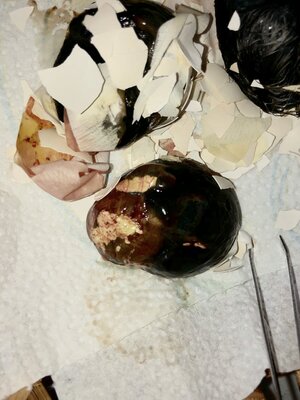Thebantyhenhomestead
Chirping
The first poke I did to break the outside egg shell was tough for me but I never done it to an incubated egg so I don’t know what to compare to being normal for that,It does look really big... Is this the one that internally pipped? It looks like the beak is facing away from the air cell which would be considered a malposition.
Otherwise you can see that the membrane isn't tough, there isn't any gelatinous fluid or swelling of the abdomen, and there aren't any malformations that are visible so that's good.
so am I still on the right path for having a more humidity and hoping for the best? It looks like a big healthy chick so I don’t know what’s happening




